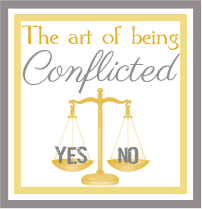I used to be one of a group of bloggers that posted "Two Thoughts for Tuesday each week as part of a meme for Blogdumps. The meme was discontinued and I miss all my Blogdump friends. A shout out to you guys and a solo version of TTFT.
Thought #1...Barbie Bodies
Recently, while I was watching the news, (and I use that term loosely) there was a segment about the new and improved line of Mattel Barbie dolls.
As for this new line of Barbies... Mattel has decided that the old Barbie was an unrealistic, unattainable body type and they are now going to offer Barbie with a choice of four body types, seven skin tones, 22 choices of eye color, and 24 hair styles. This all comes on the heels of (no pun intended) last year's modification for movable ankles that allows Barbie to wear flats. (perhaps Babs developed Plantar Fasciitis..guess we will never know as she's not talking)
 |
| Petite, curvy, tall and original |
According to the report I was listening to, the announcer said, that (specifically) young girls would want a doll that represented how they look.
According to USA Today:
The new body types have the potential to impact both girls and boys' expectations of body image, says Florence Williams, a visiting scholar at George Washington University's public health school and author of Breasts: A Natural and Unnatural History.
"Kids are just bombarded with images that are really just not true to nature," she says. "It can potentially damage your self-esteem or limit your world view." She adds that it's important for young boys to understand women's bodies come in all shapes and sizes because "they grow up expecting girls' bodies to look a certain way."
Barbie's waif-like appearance in many ways spurred the quest to find a doll that doesn’t perpetuate unattainable beauty standards for young girls.
In 2014, Nickolay Lamm of Pittsburgh raised over $95,000 to produce a first run of the Lammily doll. Lammily has the body proportions of an average 19-year-old woman based on data from the Centers for Disease Control and Prevention. The doll was nicknamed the “normal Barbie" and could be purchased with "Lammily marks," or stickers that included cellulite, stretch marks, freckles and acne.
 |
| stretch marks and cellulite..something to aspire to. |
Anyway, the whole idea that little girls self-esteem being damaged by Barbies body had me reminiscing. I had Barbie dolls when I was a little girl and I don't recall aspiring to grow up and have her body. In fact, I was pretty sure when I got boobs, my body probably still wouldn't look quite like a $3.00 molded plastic form. In my cynical, conspiracy-theory prone mind...I would be more inclined to think it wasn't her body that was the appeal but the desire for her wardrobe. All her cute clothes spurred a generation of women that needed closets bigger than a 1950's kitchen.
As for wanting (or needing) a doll to mirror my image, there would be no explanation for me buying Ken. I probably would have thought the Lammily doll was cute as, well, but would I have wanted to slap cellulite and acne on my doll? Probably not.
I guess, I am not adverse to the new Barbies. (You do understand the "conflicted part of this blog, right?) Diversity isn't a bad thing in plastic dolls but is it really changing how children feel about body types? In the real world aren't children still being surrounded by marketing that is full of stereotypes.
Now that Barbie has 4 body types with differing shapes, it would stand to reason that Barbie is going to have trouble finding clothes that fit. Mattel has unwittingly brought about a "learning" experience while children try to figure out an appropriate wardrobe for their dolls.
No more of the "one size fits all". NOPE...now little girls will be crying that
curvy (chubby) Barbie can't wiggle into Petite Barbies jeans. Tall Barbie will be wearing wearing her skirts way to short to be decent... and poor Petite Barbie needs a tailor that can alter her clothes. Guess those little girls that still play with Barbie dolls are in for a valuable lesson. Finding petite, tall and "curvy" (it would be rude to say fat) clothes is going to bring them into the real world of shopping.
BUT wait...isn't this all a bit one sided. That's what one company thought.
Yes, according to Today Style, a UK company came up with a digital version for Ken to evolve as well.
"Real men don't all look like Ken, just as real women don't all look like Barbie — so it's about time the doll was more reflective and a bit more body positive," Katherine Ormerod, editorial director at Lyst, told TODAY.com.
Lyst, a U.K.-based e-commerce website, took the Internet's request to heart and created a "Fashionisto" Ken line, including Beach DadBod Ken, Bearded Hipster Ken and Balding Ken. They also designed an African American, Asian and petite Ken
Welcome to the party, boys. DadBod, I dare you to wear hipster's jeans.
Thought #2 ..Skinny and Super Skinny Jeans are Evil
I think Mattel and Lyst are both in denial with the difficulties involved in providing appropriate fitting clothes now that these doll bodies aren't fitting a rigid set of what manufacturers deem "normal". At least that how it works in the human world.
In the non-doll world, you have to hunt far and wide to find clothes that fit bodies that aren't a standard size and form. That is true for both men and
women. While I believe men have somewhat of an advantage as they at least can look for clothing based on their waist size and inseam length. Even then, the cut can still be too lean (skinny) or loose (relaxed) to fit right.
Hubby and I were in the mall yesterday on the hunt for jeans that fit. I am not kidding when I tell you that, clothes shopping is on the lowest rung of things I ever want to do. I am pretty sure shopping is a pre-test for hell.
Evidently, American designers of women's jeans are under the impression all women, no matter what size they are, want to wear jeans that are constructed with the same elasticity as inner-tube rubber. They sell the idea by telling us that it will make us look slimmer. Calling jeans "skinny jeans" or "super skinny jeans" gives us the impression that by wearing these that it will magically make us over in the same way that the Fairy God Mother transformed Cinderella. But here is the rub... even slim women don't necessarily look thin in "skinny" jeans. They look contorted, constricted and uncomfortable.
Then to pile on an additional layer of absurdity, you need to make appropriate tears because nothing is as charming as this:
Yet, I remain resolutely optimistic that out there somewhere in a lovely department store there remains a pair of jeans that are neither worn out nor require a contortionist to get into, but I have yet to find them in my size. They continue to allude me. I am not lucky with Lucky. No luck with NYDJ. Granted they aren't my daughter's jeans but turns out they aren't my daughter's mother's jeans, either.
OK...enough whining. I realize that this isn't even close to an important problem comparatively speaking. My point is that while marketers are claiming they are altruistically changing the body type of Barbie to shore up the self-esteem of girls and give little boys a realistic female body image, it's probably more a marketing tactic. Will any child's attitude about body types be changed because Barbie got tall, small or curvy? Who knows..... BUT if our children grow up and have "real" bodies, they are going to be hard pressed to find a decent pair of jeans.
























No comments:
Post a Comment